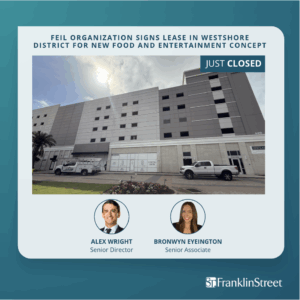The self-storage industry continues to outperform most commercial real estate sectors, but there could be trouble on the horizon as some markets face oversupply. Read about the factors that have led to this situation and the risks to all investors and owners. Plus, get guidance on how to protect your investment.
The secret is out and it has been for a while: Self-storage is a savvy and profitable investment. Since before the COVID-19 pandemic, we’ve watched this commercial real estate sector boom, with words such as “recession-resistant” being (overly) used to describe this product type. In fact, 98.2 million square feet of new storage will come on the market in the United States this year, with 4,750 properties currently under construction, according to StorageCafe, a nationwide storage-space marketplace powered by software company Yardi Inc.
But what happens when too many self-storage facilities flood the market? Will single-site owners be forced to compete with deep-pocketed institutional operators? Will some markets be oversupplied?
Today, we’re teetering on that brink with the sector at risk of facing increasing vacancy levels, decreasing rental rates and other detriments. How did we get here? More important, what can industry participants do to curb oversupply and ensure the health and profitability of this investment product for years to come? The answer begins with the following factors.
Steady Growth
Self-storage use has climbed steadily in the past five years. It’s estimated that the number of U.S. households using it topped 14.5 million (11.1%) at the end of 2022, according to the Self Storage Association’s annual demand study. The South leads the pack, with 43% of renters. Millennials are the top users, with 5.9 million households renting space. That’s nearly as many rentals as those made by the Gen X and Boomer generations combined.
At the same time, we’ve seen the industry transform from an asset class dominated by “mom-and-pop shops” to an emerging investment product for private investors, family offices, private-equity groups and larger, institutional syndicators. The pandemic shined the spotlight on this industry as one of the few safe commercial real estate sectors in which to invest, as it wasn’t subjected to the same loss of income as other real estate categories. In fact, as consumers made room for home schooling and remote working, self-storage rentals climbed.
Investors poured capital into the sector because of the low cost of money with favorable interest rates. Not only did they consider this asset class to be safe, it was the only one that offered malleability in returns. One could enter the market and increase returns on day one, due to the month-to-month lease terms.
Recession Resistance
During the last recession, self-storage proved itself to be resilient even in the face of challenging economic factors. Because of its relatively low entry threshold, it’s an attractive investment. Further, once a facility stabilizes—that is, 85% occupied—it’s rare for it to dip below that level. After all, if a customer is paying $60 a month for a small unit, they’re likely to keep doing it rather than endure the trouble and expense to remove the contents.
Likewise, state laws regarding liens and delinquent customers that impacted other sectors were favorable to self-storage operators. As multi-family owners were kept from evicting nonpaying tenants, self-storage had the green light to legally expel delinquent renters—not that there are typically many. Given the price point, far fewer units fall delinquent when compared to apartments.
Institutional Investors
The mom-and-pop operators who have historically dominated the self-storage market typically kept rates stable without raising them on existing tenants. They offered personalized service even if the facilities were basic (with many in need of a touch of lipstick), with bare websites and minimal technology, if any. But as larger owners entered the space with streamlined operations, upgraded facilities and large marketing budgets, the sector changed. This upgraded product has made the industry more competitive, from an investment standpoint and a consumer one. Overall, self-storage has upped its game.
Similarly, larger owners raised rents and deployed dynamic pricing models to adjust rates on a weekly, if not daily, basis based on availability. Why? While independent operators are primarily concerned with keeping occupancy high, larger investors are laser-focused on projected returns. This means they’ll push rents as much as possible, even if it means a temporary loss of occupancy.
But single-site operators aren’t going anywhere, at least not at the moment. It’s estimated that 65% of facilities remain owned by independents. Many of these sites are close to 100% occupancy; and since these operators typically aren’t as focused on raising rents, rates remain below market, which is an attractive draw to potential renters and an impetus for existing ones to stay.
The Risk of Oversupply
Because of aforementioned factors, institutional investors have been and continue to be eager to grow their self-storage portfolios. But it’s wise to proceed with caution, and perhaps an adjusted pro forma. Many top-tier cities, such as Atlanta; Charlotte, North Carolina; Nashville, Tennessee; and other high-growth, business-friendly urban areas have been flooded with more product than the market can potentially bear and are at the highest risk of oversupply.
How does this happen? Some developers include future residential units when calculating a market’s self-storage demand. But with housing development slowed or canceled due to supply-chain factors or climbing interest rates, new storage facilities are coming online without the customers to support them yet. Therefore, investors need to be prepared to miss income targets in the short term as the market catches up and a more stable economy emerges.
One of the biggest reasons consumers rent self-storage units is a residential move. However, because of higher interest rates, fewer people are buying houses. Couple that with the economy moving toward a recessionary period resulting in compressed rental rates. Prices are retracting as the need for storage minimizes or consumers’ disposable income disappears. Some tenants are vacating their units to minimize household expenses. Clearly, while self-storage is somewhat recession-resistant, it’s far from being recession-proof.
What to Do Next
Declining rents are one of the first indications that a market is oversupplied with self-storage, followed closely by high vacancy. Particularly at risk are markets with low barriers to entry and municipalities with less-stringent approval processes.
Today, the Sun Belt is at the highest risk for oversupply due to the sector’s explosive growth during the pandemic. Why? Timing. Construction of self-storage, retail and multi-family has boomed over the past several years. However, self-storage projects are outpacing others and coming online sooner, meaning they’re ready for customers before the population is infused with new residents. Investors should get ready for a potentially costly and lengthy waiting game before they see returns.
When a market is at risk of oversupply, competition turns fierce. It’s time for owners to crank the marketing machine. Use search engine optimization tactics to connect with potential customers and a high-performance digital platform to engage them. Build trust with tenants by providing a safe, secure and clean facility. Examine overhead and conduct cost analysis to maintain profit, even as rental rates decline. Now more than ever, efficient and effective operations are a top priority.
A shift in site-selection strategies may also create opportunities when top-tier markets are at risk of oversupply. Secondary and tertiary markets offer a population with little access to self-storage. Developers willing to overcome challenging topography or negotiate with strict municipalities will find opportunity. Those that seek future high-growth markets will also find fewer institutional owners already in residence.
Looking Ahead
Economic headwinds along with pandemic recovery are pushing the self-storage sector to the brink of oversupply. But will it take one step too many? Today, occupancy levels are softening and rent rates are compressing as new technologies and operational trends continue to emerge. However, once interest rates stabilize and consumer confidence returns—and both will happen—self-storage sector will return to its glory days of profitability, even in oversaturated markets.
As for the investors who brought us to the potential brink of oversupply, well, they’re here to stay, too; but not to the detriment of the entrepreneurs. There’s plenty of roadway as long as caution to not overburden an emerging market is heeded.
Frank DeSalvo and David Perlleshi are senior directors with Franklin Street, a Tampa, Florida-based commercial real estate firm. They oversee a team that buys and sells, finances, insures, develops, and manages self-storage facilities throughout the United States. They’ve facilitated a combined $100 million in storage transactions throughout their careers. For more information, call 813.839.7300.




